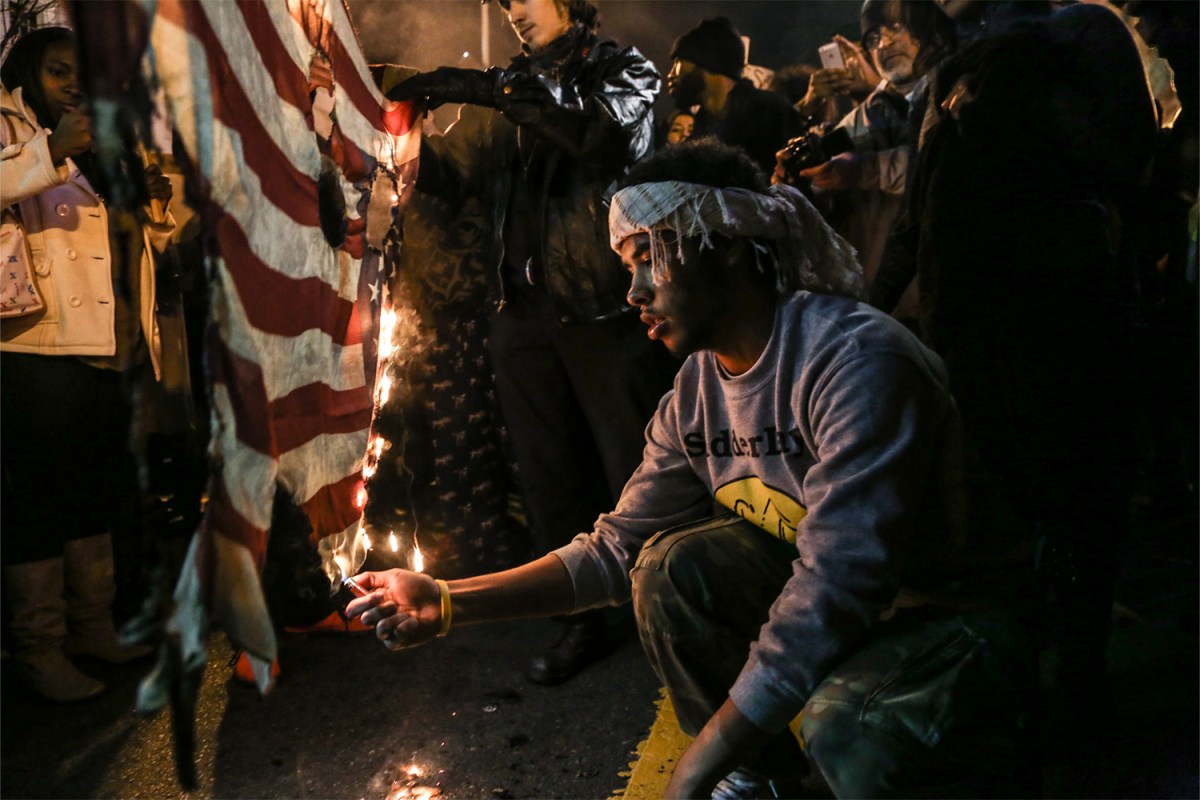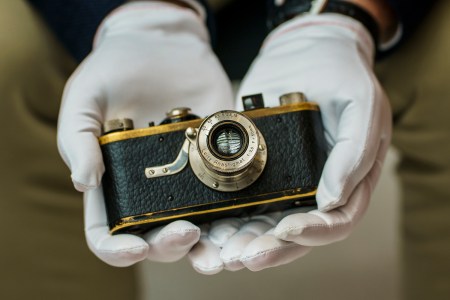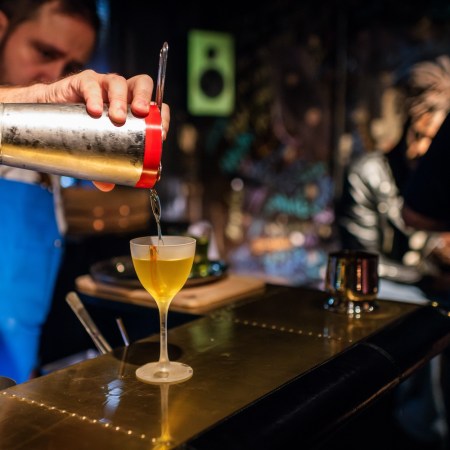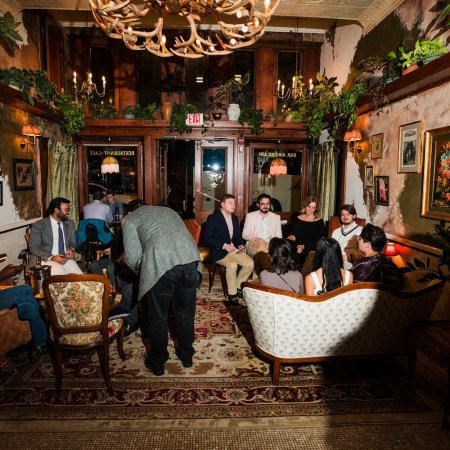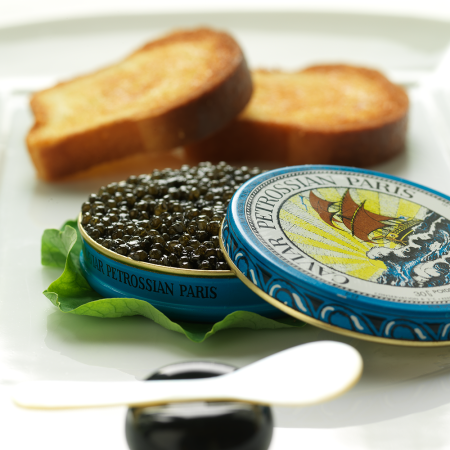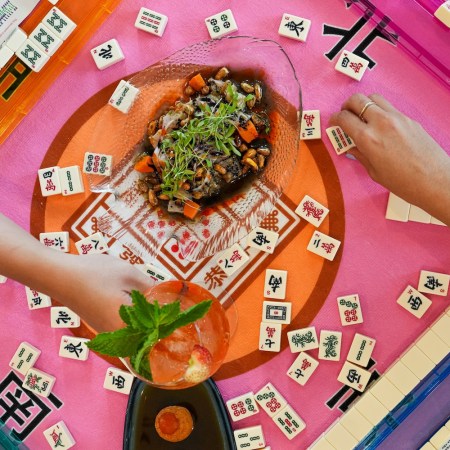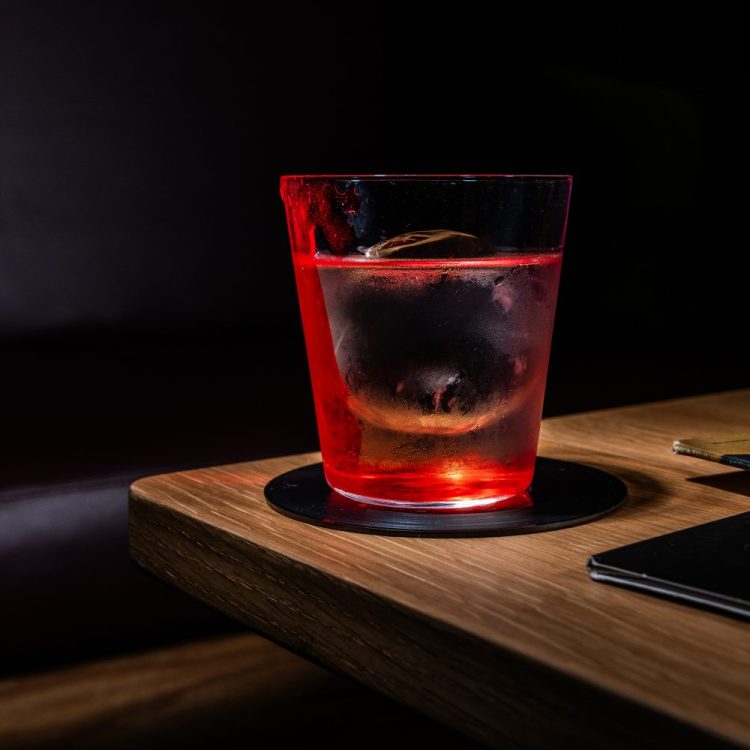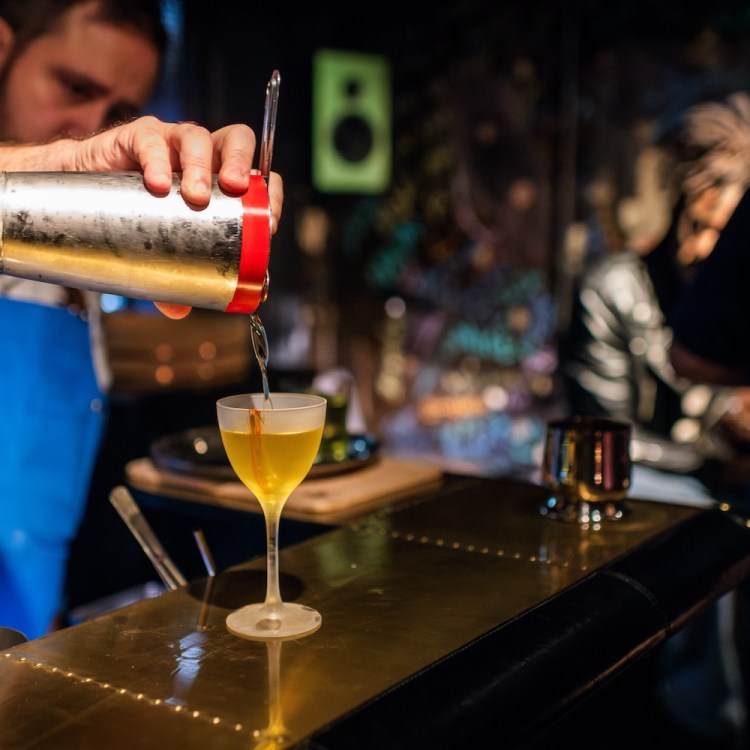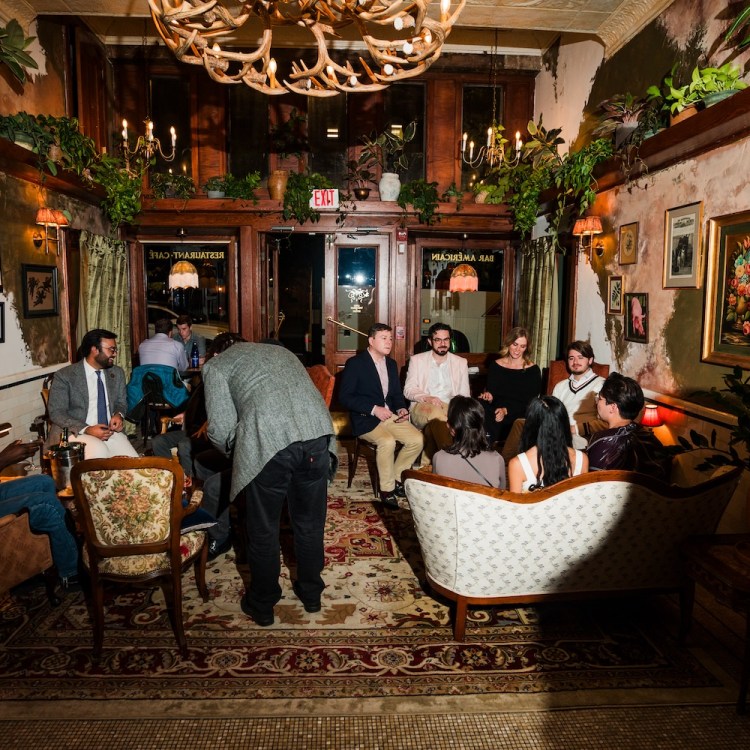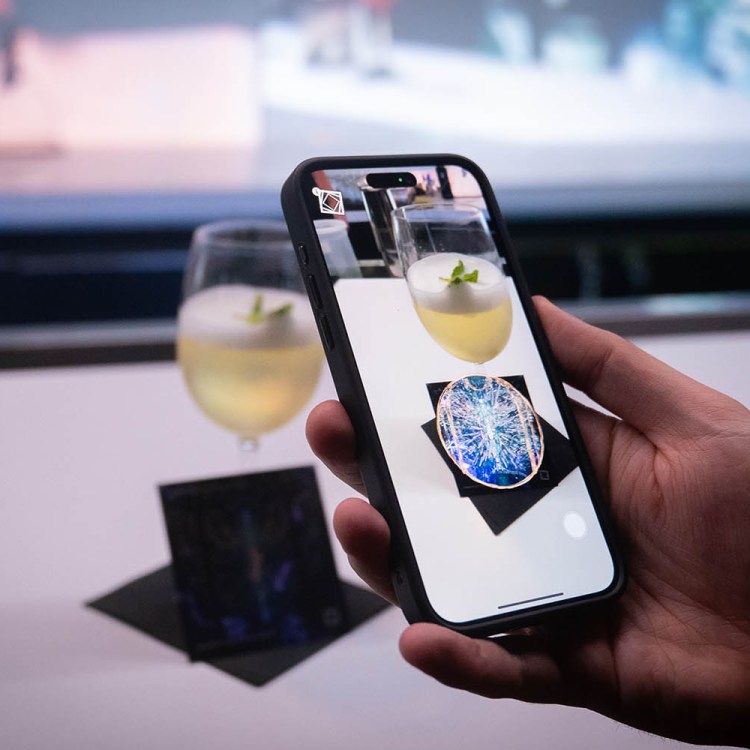Sometimes you want to pack a gas mask. Sometimes you want to bring ear plugs. But eating fried rice is always a good idea.
Armando Gallardo has shot the biggest artists in the world — and the biggest insurrection on United States soil. Though it may not seem like there’s a lot in common between Bad Bunny and political turmoil, there are enough similarities to make a photographer feel at home in both situations.
We asked the nightlife photographer and conflict journalist about the commonalities between covering well-planned excitement and unanticipated conflict.
InsideHook: You’ve shot nightlife in DC and throughout the world. Are there any similarities between shooting concerts and conflict zones?
Armando Gallardo: Quite a few. There’s the surprise element. I like to treat each concert photo experience as a first-timer. I don’t go on YouTube or check any previous setlists to see how the performance will break down — it would simply ruin the experience for me. Every time I go photograph, I simply don’t know what I’m gonna get. Perhaps they are giant bobbleheads, as was the case with Arcade Fire, a sea of people split in two going head-to-head against each other during Dan Deacon’s dance contests or Bad Bunny’s laser show during his last tour. I never know what to expect.
Likewise, in times of unrest you don’t know where a group might come from, how the night will end or in what situations you might just find yourself in. Obviously, conflict zones are way more dangerous than a well-established show, but the surprise element is always present.
The adrenaline is similar. At concerts you normally get three songs in the photo pit and then off you go. Depending on the venue, they might just let you photograph from other places past the first three songs, but that’s rare. That means you have, give or take, 10 minutes or so to try to capture what the show is about. Not to say concert photography is not serious business — it’s fun, but there’s a certain burden of responsibility on your shoulders to try to provide your editor with a wide range of photos that someone who went to the show would see and say, “Yes, that’s the show I went to.” Add music blasting in your ears and fans screaming right behind you. Next thing you know, there’s this sudden rush of adrenaline you get during those first three songs which can be quite similar to what you feel in a conflict zone.
No matter what the event is, I always like to find what the event is doing to the human experience. During a conflict, you look for faces that might be able to freeze the moment and hopefully showcase what that fraction of the second is and feels to them. At a concert, you want to do the same thing. You are there to shoot the show, but what I love the most is to turn my camera to the other side, the audience, and try to show what they are experiencing. It might be a sudden sense of loss from a song that reminds them of their young love or a rush of ecstasy during the first licks of the song, which they partied to with their ride-or-die friends. It’s often all in there, their faces, their eyes, their gestures.
The one disclaimer I would have is not to equate one specific event with another since, depending on the seriousness of the conflict, you might just be putting your life at risk, which normally won’t be the case as at a concert.
Is there any commonality between a great live shot and captivating video footage?
The biggest common denominator is knowing what might happen, which only comes with seasonality and getting yourself in the thick of it. There’s that saying that humans use only so much of their brain. Well, getting to photograph or film is a great time to feel how much your brain can process at once. Not only are you thinking about the present, you’re also analyzing what’s happening and trying to get yourself situated and ready for what might come next. It can be quite the mental exercise. When you photograph, you only have a fraction of a second to get that great live shot — but similarly, when you film, no matter how much you might shoot, unless it’s a documentary, nobody is going to watch all of the footage you captured. You then only have so much time to showcase what the time and place were about.
How Leica Made It to 100: Gold-Standard Cameras and the “Human Eye”
As the German camera masters celebrate their centennial, we look back at the beginnings of the brand and the anniversary gear they’re rolling outYour work has gone viral a few times. From Occupy Wall Street to a couple kissing at Merriweather Post Pavilion, do you ever know when you’ve captured something with mass appeal?
Great question. I would like to say yes. Going back to the previous question, as you prepare yourself for what might be around the corner, you also know what you might be able to produce. When the moment is just right, you find yourself clicking and thinking, “I got something special there.” You just can’t wait to go back to your computer to edit, make sure all the right things are sharp and the shot is what you thought it might be. Then again, there’s also the false positives, in which you might have just felt as if you got something special but when you go back to edit it, something is missing. It might be a good shot, but it doesn’t have that emotion and aesthetically pleasing element which is so tied to virality. Both the Occupy Wall Street shot and the Merriweather Pavilion shot had that special something, and the subject matter was timely.
Because you’re a DC resident, do you find yourself at an advantage when covering political events? Does it help knowing how to get home quickly from the Capitol? Does it matter? Is any of this helpful when you’re covering an event outside of D.C.?
It sure does. There’s nothing like feeling right at home — knowing where the closest exits are, what street leads to X, what’s the closest nuclear shelter (for us DC residents), what landmarks might a specific group prefer to stop by versus another, what mode of transportation might be the easiest to take to get to a specific event, etc. On that last point, as DC residents we are quite privileged to live in a city that is so compact and easy to navigate. There are buses, taxis, Metro, scooters and my absolute favorite, Capital Bikeshare.
This might sound like some free Capital Bikeshare promo, but it’s the best 100 bucks a year one can invest in if your work involves covering political events in DC. If it’s happening at the Hill or downtown, there is a station near the event, you will be able to beat traffic during rush hour and if the event goes for long, you don’t have to worry about having to bike back since you can just drop it off in one of their stations and take back Uber home after spending several hours on your feet.
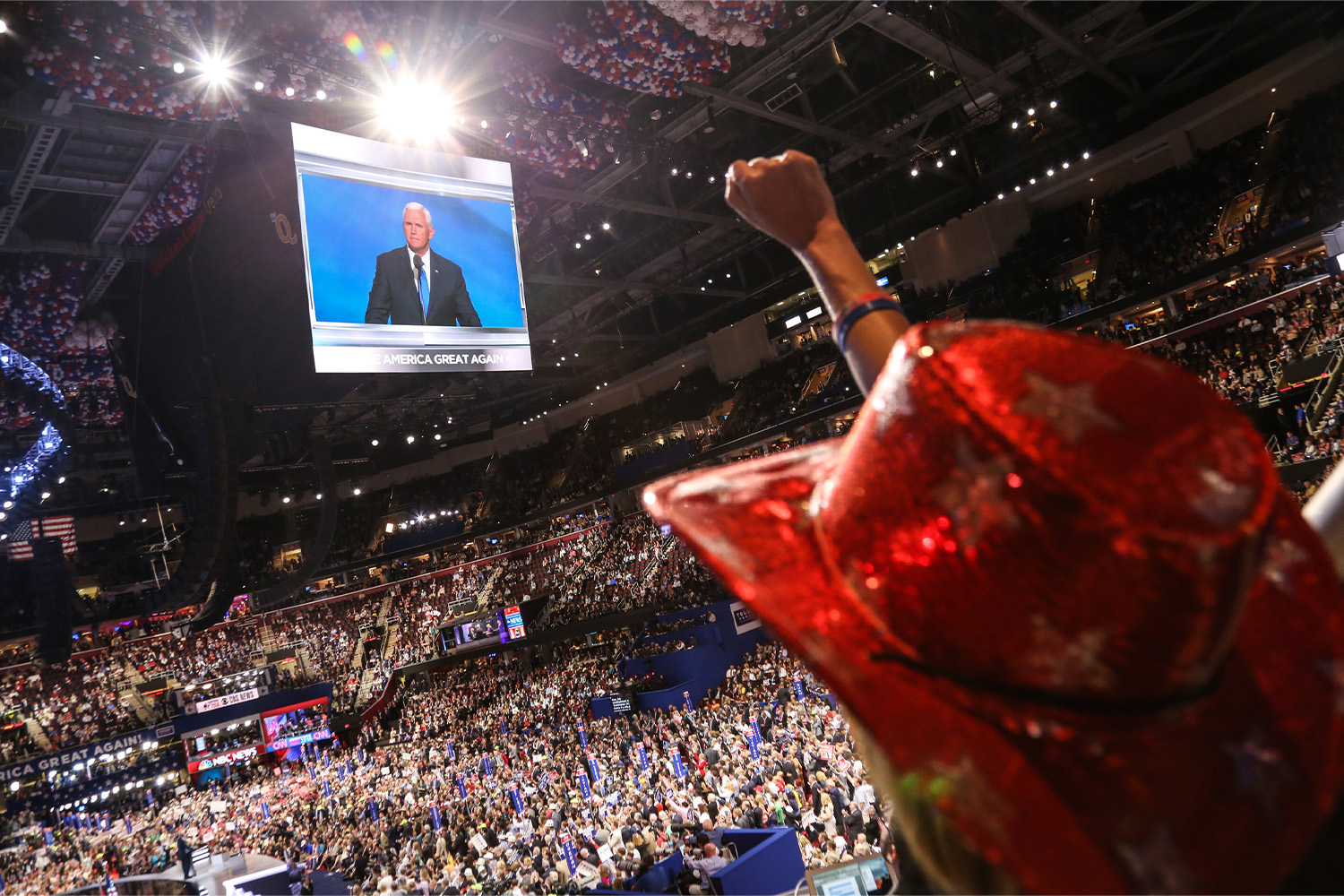
What’s the scariest place or event you’ve photographed?
Hands down, Jan. 6. The mere feeling that this might just be the last thing you might cover is enough for anybody to feel that sense of scare.
Since I’ve been covering some of the groups involved in the attack previously as part of my beat, I knew that day wasn’t going to be just another protest — not to mention the writing on the wall was all over the internet.
Simply put, it’s part of your work. You learn to thrive, read and understand chaos and ultimately hope you are able to portray, to the best of your ability, what was happening that day, no matter how scary or unnerving the circumstance might be. Previous inaugurations have also had a similar feel to them.
During Trump’s inauguration we were getting hit with unrest happening up and down downtown, which certainly turned on your alarm bells, but also during Obama’s first inauguration, the crowd was so massive that you would find yourself truly stuck in a sea of people to the extent that the fear of a stampede was real.
If you could only bring one, would you pack ear plugs or a gas mask?
Always a gas mask. My only advice is to make yourself familiar with the use of it before and know what the locals laws say about using them. Also, keep the number of a reporter’s hotline or First Amendment lawyer handy. My bonus “must” would be stomachache pills — if the pain hits it might just not let you do your work appropriately. For concerts, though, bring the ear plugs and not the mask.
What’s the best pre-shoot food? What’s your favorite post-shoot comedown meal?
Combination fried rice for pre-shoot. It’s not heavy, you can pack it up if you don’t finish it, it’s pretty delicious and the chances of it landing you at the ER are quite low. Down 14th Street, between my home and the White House, there’s this great local Chinese food place called Great Wall Szechuan House, highly recommended.
Post-shoot, pizza. It’s definitely heavy, feels like a warm hug after a long journey and what’s better than that first bite while going through your work from the past few hours?
This article was featured in the InsideHook DC newsletter. Sign up now for more from the Beltway.
